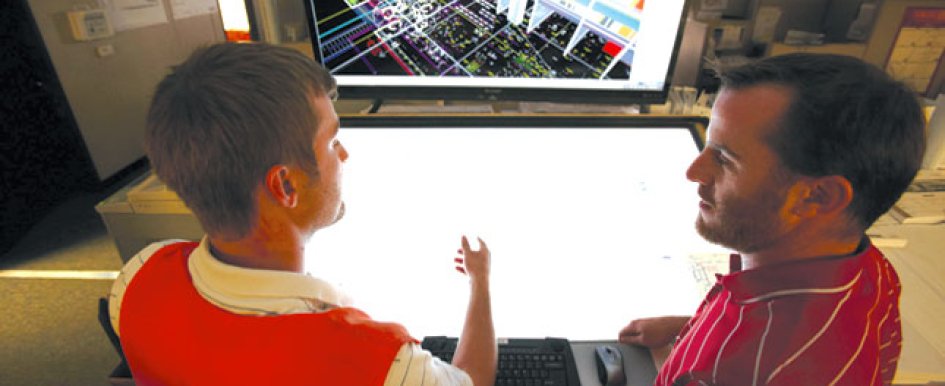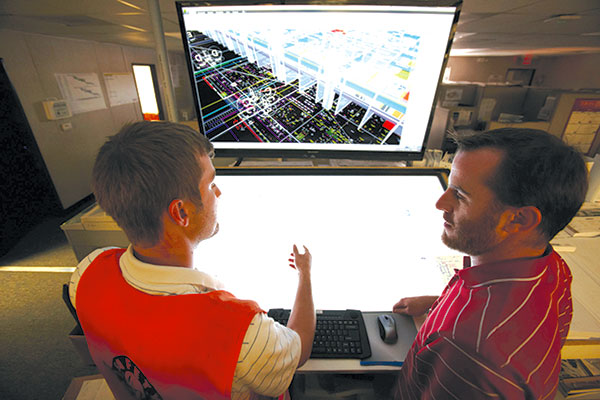
What makes a construction company a great place to work? Business leaders have ideas of what they want their company cultures to be like, but ultimately it’s the employees who decide whether a company has a healthy culture—and whether they want to stay with you in the long term.
That doesn’t mean a company’s culture should focus exclusively on the ideas of employees. In fact, such an approach probably wouldn’t work well for long. Keeping your employees satisfied at the expense of your organization’s business performance just isn’t plausible. While employee retention would not be an issue, financial health likely would be.
The opposite approach doesn’t work in the long term, either. Focusing on the organization above employees and all else might maximize financial performance for a time, but that success would be short-lived because employees are an organization’s lifeblood. When they feel that they’re taking a back seat to the balance sheet, satisfaction and retention will suffer.
The most sustainable organizational culture is a blend of both employee- and finance-driven values. A culture-driven organization that accounts for the needs of both the company and employees has a far greater potential to produce strong financial results and to motivate and retain top-quality employees.
 Three Steps to a Healthy Culture
Three Steps to a Healthy Culture
An organization’s culture isn’t a snapshot of a day or year. A healthy culture is an atmosphere that continually blends satisfied employees with successful business results. There are three key steps to creating such a culture:
Build highly functioning teams.
It is vital to create a culture of “we” rather than “I.” Doing so can be more challenging than it sounds. The construction industry includes some extremely talented people who have a track record of doing great things on their own. But, their success can be limited because it isn’t scalable. Those who don’t fall into the “me” trap have the potential to become invaluable team members. The key is to demonstrate that on the right team, every member shares the desire to achieve the highest standards. That leads to the second step.
Reject mediocrity.
Members of highly functioning teams want to perform their best every day. They thrive in these teams because they expect to be surrounded by others who seek the same challenge, and when that collaboration begins, new standards of excellence are set. Team members then trust each other to perform, and that motivates everyone to excel.
Provide the tools to succeed.
When a high-performing employee commits to a company, it’s vital to provide the training, safety and quality programs, operational systems and other resources that help the individual grow. The industry’s top talent will demand it and will be loyal to the organization that offers these and other rewards, including potential ownership in the company.
Taking the Next Step
An employee stock ownership plan (ESOP) is a proven strategy that family-owned and other private businesses can use to foster a spirit of unity. When employees participate, they own a share of the company’s success. This encourages individuals to perform their jobs well and to work together. When employees begin to think and make decisions like owners, they perform at a higher level.
ESOPs have another advantage that is as powerful as it is subtle. When coworkers are also co-owners, everyone believes that everyone else is always doing their best. This breeds a level of team confidence that is difficult to achieve otherwise.
The value that employees place in having an ESOP varies by generation. It may be highly valued by seasoned employees, but younger employees may find other aspects of the organization, such as the strength of the training program, more important.
This difference in value of ESOPs raises another point: There is a large generation gap in construction today. Several generations are working side by side. At McCarthy, we have no less than four. While older generations may have worked for only one or two companies in their careers, younger employees expect to work for more. Different generations may build careers in different ways, but they have a common goal: to achieve as much as they can. They recognize that being a co-owner makes a difference in their success and that of the organization.
Giving Back
One of the hallmarks of a healthy culture is the desire to give back to the community. A healthy employee culture senses its role in the community and embraces that role. More than meeting personal or organizational goals, this is about improving quality of life. When organizations make it a priority to give back to the community, traditional barriers of age, position and experience seem to matter less, and trust develops throughout the company. There’s no better ingredient for being a great place to work.
